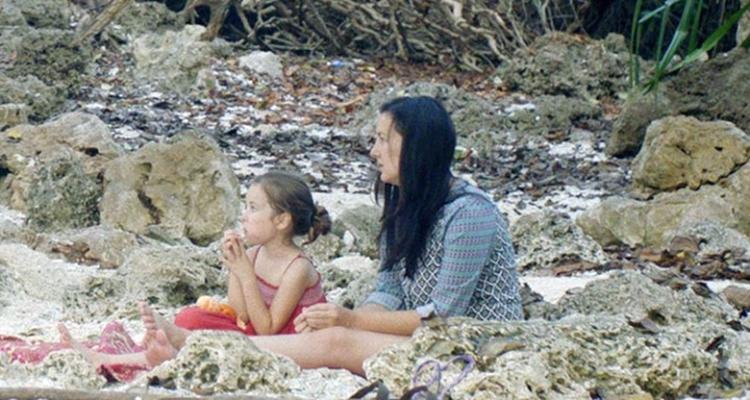Christmas Island is an Australian territory just off the coast of Indonesia. It’s a remote forested isle with no aboriginal inhabitants and thusly a seemingly perfect spot for a government to dump unwanted people. Australia has been operating a Guantanamo-esque detention center there for asylum seekers since 2001. Their Kafka-esque limbo state has resulted in frequent protests, some deaths, and an avalanche of criticism from human rights groups. However, You will discover almost none of this context in Gabrielle Brady’s all-too-pretty but information-deficient documentary “The Island of the Hungry Ghosts,” which received its world premiere at this year’s Tribeca Film Festival.
Based on her 2017 short “The Island,” Brady’s movie creeps slowly along on three axes. The first, and seemingly most important, is the work being done by her friend Poh Lin Lee, a trauma therapist who works with the detainees. One by one, they come into her office, where she presents them with a placemat-sized sandbox and invites them to use various props (toy figurines, mostly) to tell their story. It’s a curious-seeming approach that shows its efficacy, as her patients, using this disarming tactic of thoughtful play to open up about the long and dangerous roads that have brought them to this distant sliver of jungle in the Pacific Ocean.
What we hear from these people, some of whom appear to have come from as far away as the Middle East, are disquieting tales of surviving horrific dangers (swamped boats, other migrants being picked off by sharks in the water) only to be faced with the maddening isolation of detention. Lee’s empathetic humanity shines through as she helps them work through the trauma and angrily advocates for them to the box-checking and stonewalling detention authorities.
But Brady’s sideways approach to this story works against the movie from the start. So many specifics are shorn off from the detainees’ stories—whether by creative intent or to keep their identities safe isn’t clear—that it is difficult to anchor their experiences in the swirling nexus of geopolitical controversies that Australia’s offshore asylum detention centers have generated.
Brady doesn’t show much interest in that controversy, allowing only the odd bit of news audio to filter in while Lee is driving somewhere. (One brief news snippet refers to the government jailing people for two years simply for discussing what goes on at the center, lending a dark totalitarian aspect to this story that isn’t followed up on.) She expends an unnecessary amount of footage tracking Lee’s time with her family and her increasing agony over her inability to help her patients; all relevant to the story but hardly its most salient component.
The movie is highly intent on its second axis, the backstory of the island’s inhabitants, who are largely descended from Chinese laborers imported to work in phosphate mines. We see their rituals of making offerings to the dead who were not properly buried and so, they believe, wander the island restlessly. This element, which Brady dots in throughout, makes thematic sense, given the detainees’ dislocated yet trapped state. But it seems the doc is here almost more for the arresting visuals of sacrificial bonfires blazing in the night than anything else.
The movie puts even more purpose into developing its third and most peculiar axis, that of the island’s crabs, who migrate in great swarms back to the ocean. This disrupts traffic on the seemingly underpopulated island, with caravans of cars slowly following workers in carts who drive ahead carefully brushing the crabs off the road so they aren’t crushed. The creepy crawly scenes of the crab migration has a hypnotic effect, which is likely why Brady keeps returning to them.
But this is also where “The Island of Hungry Ghosts” runs into its greatest troubles. Given how Brady is committed to an indirect form of nonfiction cinematic essay, where she doesn’t tell a linear story but instead creates this mosaic of impressions, the viewer is left to create linkages on their own. As such, it’s hard not to see that she is making a connection between the slow, instinctive tide of migrating crabs and the flow of detainees, a potentially dehumanizing link that is likely unintended but nonetheless there.
The movie’s insistence on unnecessary opacity is a critical weakness. There is a true ruminative beauty here in Brady’s impressionistic portrait of this haunted island out of time. But by refusing to illuminate the detainees’ stories or the humanitarian crisis—not widely reported enough for Brady to take the audience’s familiarity as a given—they are trapped inside, “The Island of Hungry Ghosts” relegates itself to being little more than a pretty but wispy curiosity that fails its beleaguered subjects. [C-]
Follow along with all our 2018 Tribeca Film Festival coverage here.

